Key Takeaways
Complete guide to state football records, from individual achievements to team milestones. Learn how schools track, display, and honor football excellence through modern digital recognition systems.
Understanding State Football Records
State football records document the most exceptional individual and team performances achieved within a particular state’s high school or collegiate football programs. These records serve as benchmarks of excellence, inspiring current athletes while preserving the legacy of past performers who reached unprecedented levels of achievement.
Why State Football Records Matter
Inspiration and Motivation: When a high school sophomore sees that the state record for single-season rushing yards stands at 3,669 yards, that number becomes a tangible goal. Athletes understand what sustained excellence requires—averaging over 300 yards per game across an entire season. Records transform abstract aspirations into specific, measurable targets that athletes can pursue through intentional training and competitive focus.
Program Identity and Recruiting: Schools that produce state record holders build reputations as elite programs. These achievements signal to prospective athletes and their families that the program develops talent at the highest levels. Comprehensive records demonstrating consistent production of exceptional performers provide evidence of effective coaching, competitive schedules, and developmental environments that attract top talent.

Historical Preservation: State football records document how the game evolved across eras. Comparing records from different decades reveals how rule changes, training methods, and playing styles transformed the sport. These records preserve important athletic history worth maintaining alongside academic accomplishments and other institutional milestones.
Community Pride: When local athletes achieve state-level recognition, entire communities celebrate these accomplishments. State records generate media coverage, build school spirit, and create shared experiences that strengthen community bonds. Schools with athletes holding state records gain visibility and prestige that extends beyond the athletic department.
The Significance of Record Recognition
Research in sports psychology demonstrates that visible achievement standards significantly influence athlete performance and motivation. When records are prominently displayed and easily accessible through digital record boards, several psychological mechanisms activate that enhance competitive performance.
Athletes naturally compare their performance to predecessors, and visible records provide clear benchmarks enabling productive comparison that drives improvement. Seeing names of players who achieved records—especially recently graduated athletes whom current players knew personally—makes excellence seem attainable rather than impossible.
Essential State Football Record Categories
Comprehensive football record systems track achievements across multiple dimensions, ensuring diverse contributions receive appropriate recognition.
Individual Offensive Records
Rushing Achievements:
- Career rushing yards (total yards across high school or college career)
- Single-season rushing yards
- Single-game rushing yards
- Career rushing touchdowns
- Season rushing touchdowns
- Game rushing touchdowns
- Longest rushing play
- Career yards per carry average
- Consecutive games with 100+ rushing yards
- Most 200-yard rushing games
Passing Records:
- Career passing yards
- Season passing yards
- Game passing yards
- Career touchdown passes
- Season touchdown passes
- Game touchdown passes
- Career passing efficiency rating
- Season completion percentage
- Longest pass completion
- Consecutive games with 300+ passing yards
Receiving Achievements:
- Career receiving yards
- Season receiving yards
- Game receiving yards
- Career receiving touchdowns
- Season receiving touchdowns
- Game receiving touchdowns
- Career receptions
- Season receptions
- Game receptions
- Longest reception
- Consecutive games with 100+ receiving yards
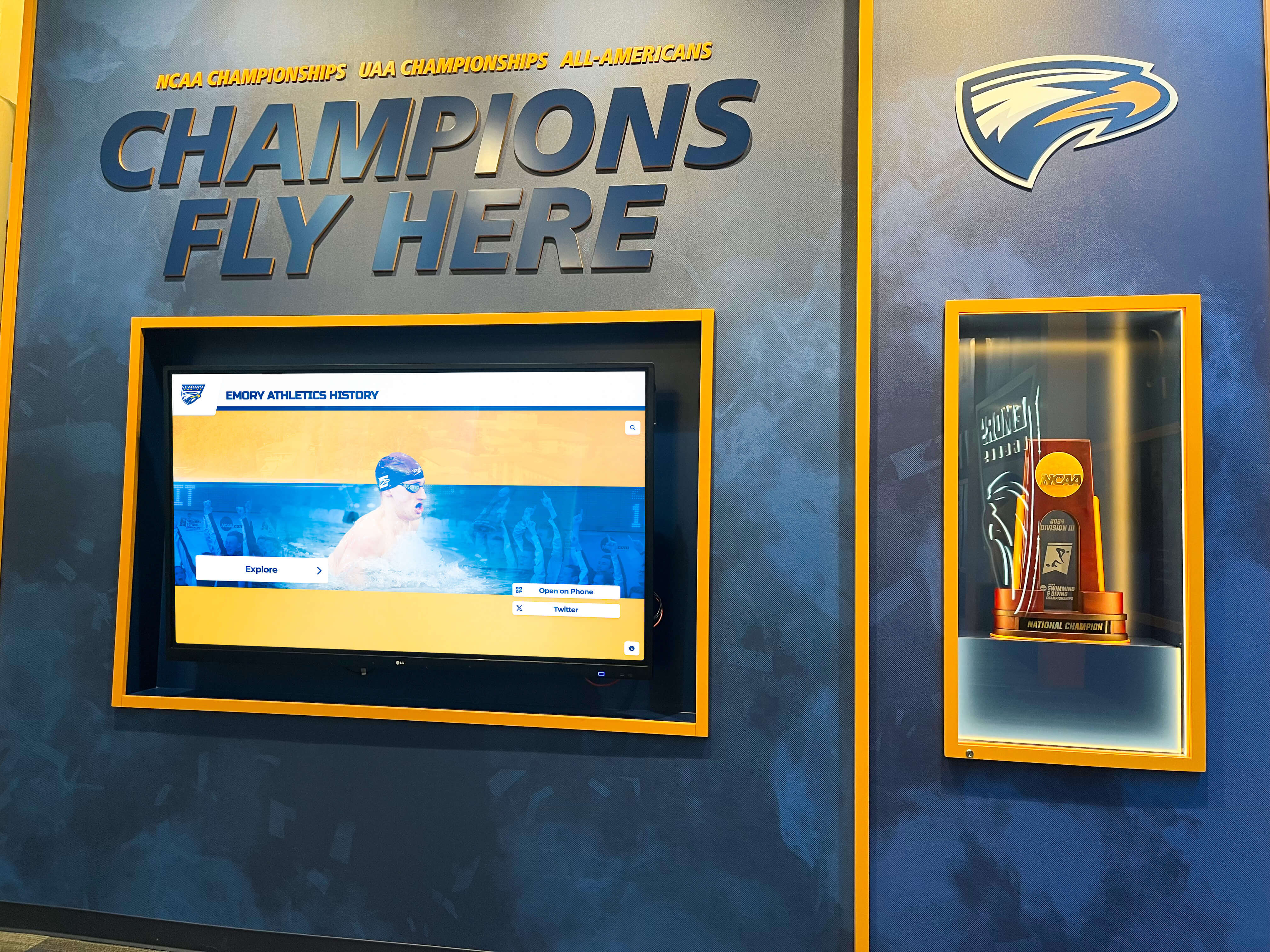
Scoring Records:
- Career total points scored
- Season total points
- Game total points
- Most consecutive games scoring
- Career field goals made
- Season field goals made
- Longest field goal
- Career extra points made
- Season extra points made
Many state athletic associations maintain official record books documenting these achievements. For example, according to the Texas High School Football Record Book maintained by Dave Campbell’s Texas Football, these categories represent the most tracked individual achievements across state programs.
Defensive Excellence
Defensive achievements often receive inadequate recognition despite their critical importance to team success. Comprehensive state record systems document:
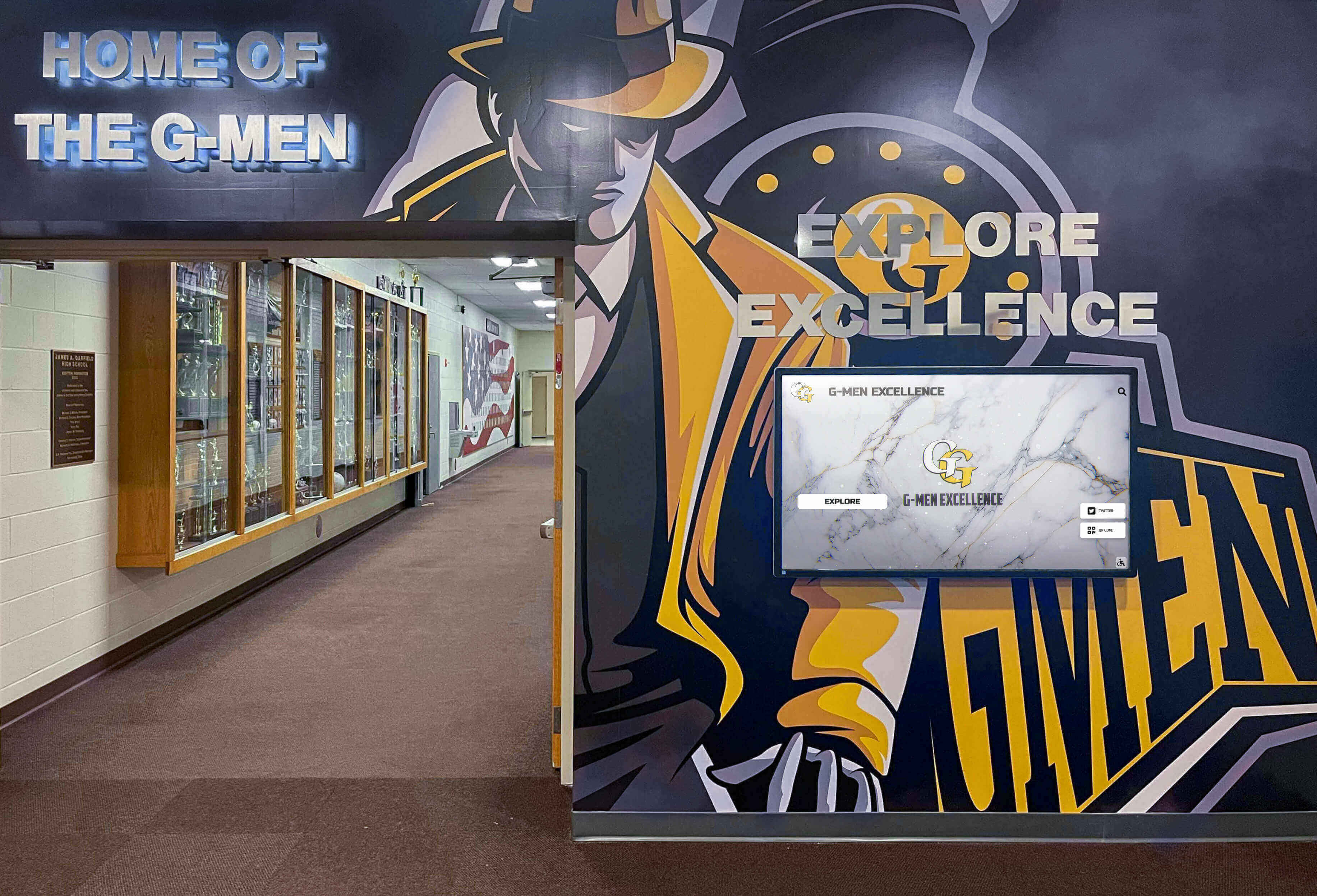
Defensive Statistics:
- Career tackles (solo and assisted)
- Season tackles
- Game tackles
- Career sacks
- Season sacks
- Game sacks
- Career interceptions
- Season interceptions
- Game interceptions
- Interception return yards
- Career fumble recoveries
- Caused fumbles
- Career passes defended
- Tackles for loss
Defensive Milestones:
- Players reaching 300+ career tackles
- Players recording 25+ career sacks
- Players achieving 15+ career interceptions
- Defensive Player of the Year honors
- All-state defensive team selections
Programs implementing comprehensive recognition for athletic achievements ensure defensive excellence receives visibility equal to offensive statistics.
Team Performance Records
Team records celebrate collective achievement representing contributions from entire rosters:
Win-Loss Records:
- Most wins in a single season
- Longest winning streak
- Most consecutive playoff appearances
- Most consecutive conference championships
- Best winning percentage over 10-year period
- Most wins by decade
- Undefeated seasons (if achieved)
Scoring Team Records:
- Most points scored in a game
- Highest scoring average for a season
- Most consecutive games scoring 40+ points
- Largest margin of victory
- Most offensive yards in a game
- Most offensive yards in a season
Defensive Team Records:
- Fewest points allowed in a season
- Most consecutive shutouts
- Most games holding opponents under 10 points
- Fewest yards allowed in a game
- Fewest yards allowed in a season
- Most takeaways in a season
Championship Records:
- State championships won (by year)
- State championship game appearances
- Playoff wins record
- Most consecutive playoff victories
- Longest playoff runs
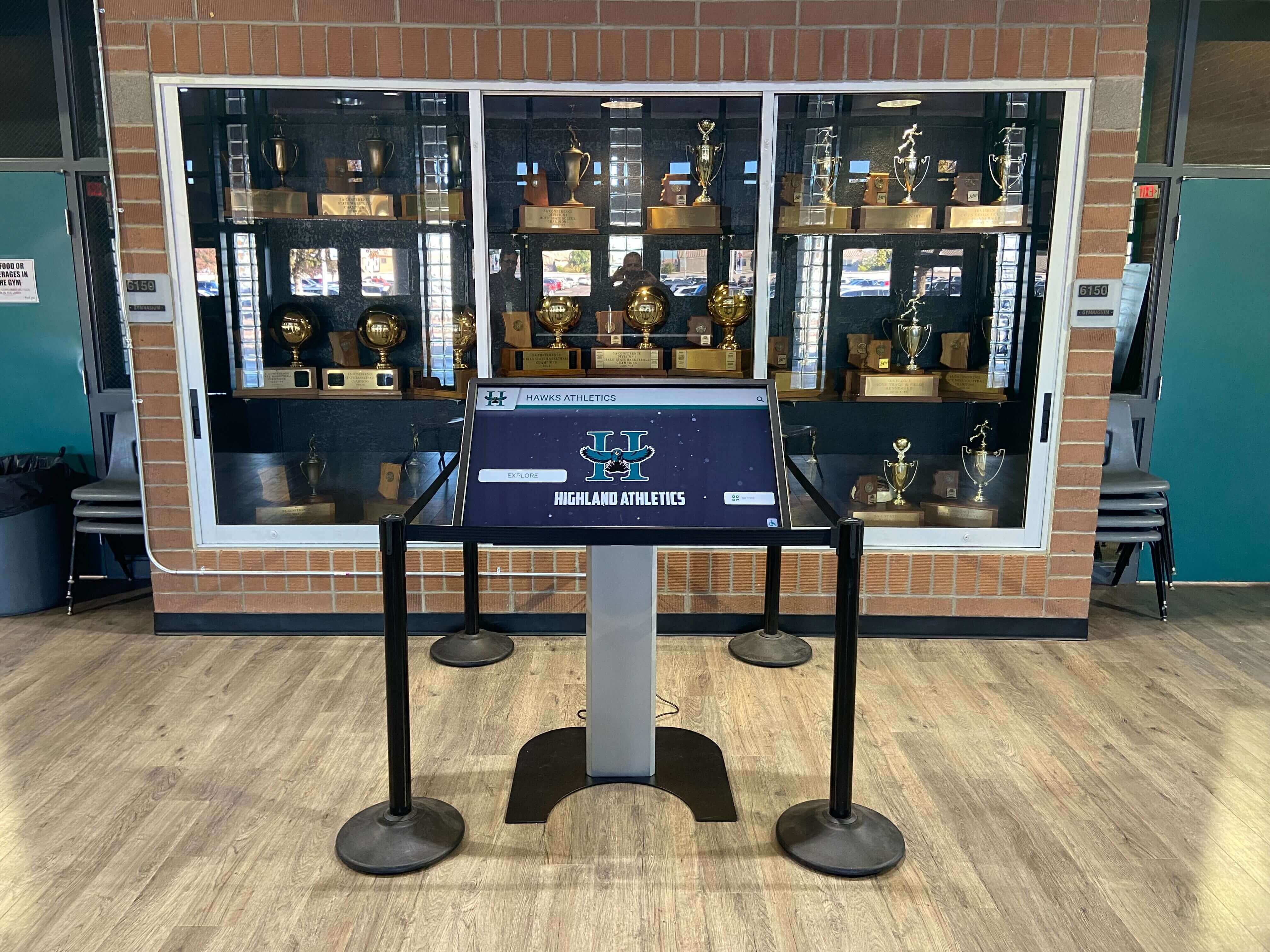
Coaching Milestone Records
Outstanding coaches deserve recognition alongside player achievements:
Coaching Records:
- Career wins by head coach
- Winning percentage by head coach
- State championships won
- Playoff appearance streak
- Conference championships won
- Years of service milestones
- Players developed who earned college scholarships
- Players developed who achieved all-state honors
- Coaching tree (former assistants’ career achievements)
According to the National Federation of State High School Associations (NFHS), recognizing coaching achievements alongside player records creates comprehensive program recognition that honors all contributors to athletic excellence.
State-by-State Record Variations
Each state’s athletic association maintains records reflecting their unique competitive landscape, classification systems, and historical achievements.
Classification Considerations
Most states organize football programs by school enrollment size, creating multiple classifications:
Common Classification Systems:
- Division I through VI based on enrollment
- Class A through Class 6A designations
- Small School, Medium School, Large School categories
- 8-Man, 11-Man, and 6-Man football distinctions
Each classification typically maintains separate record books, ensuring fair comparison among similar-sized programs. A rushing record achieved in 8-man football differs significantly from 11-man achievements due to fundamental differences in spacing, player responsibilities, and competitive contexts.
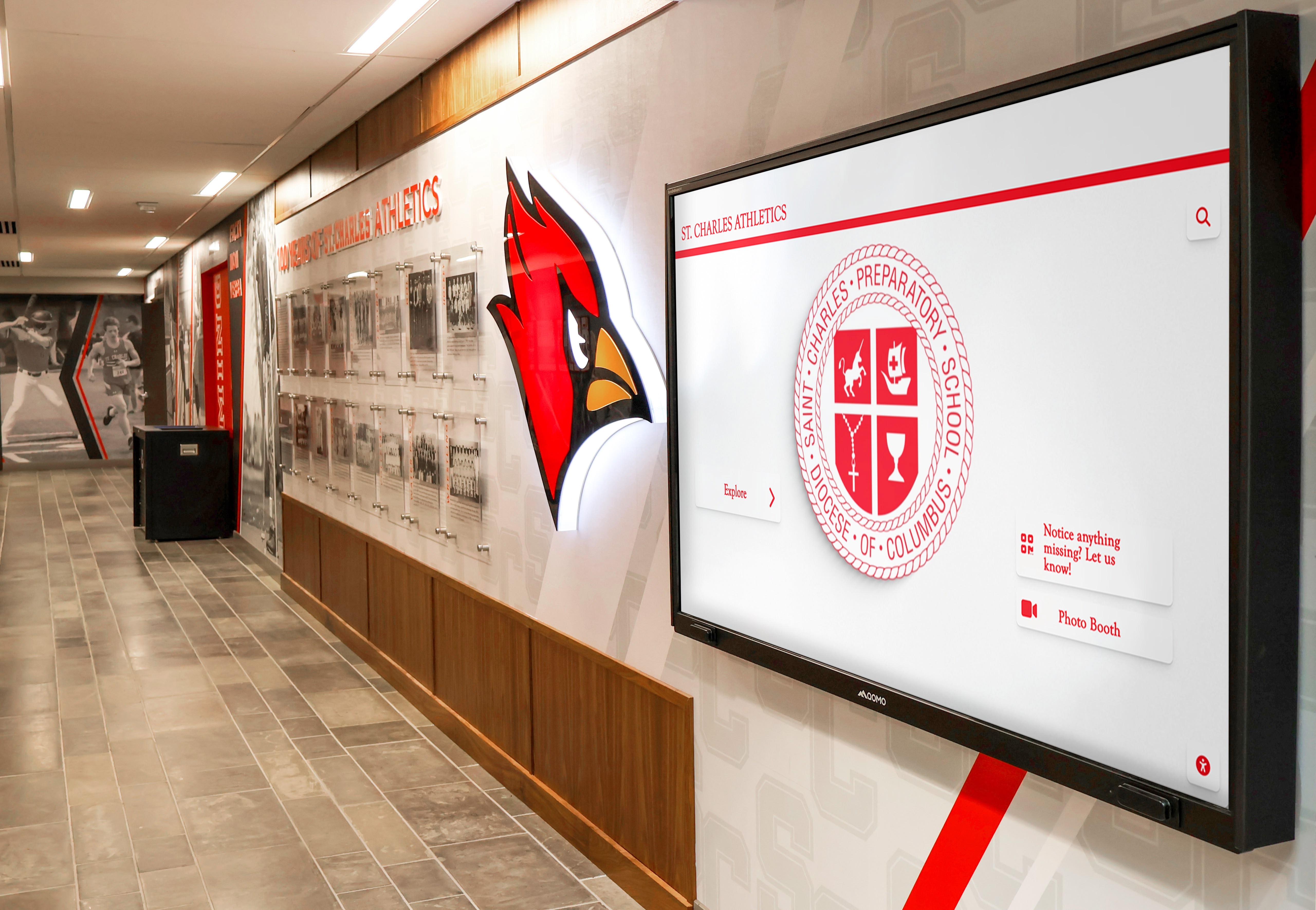
Historical Context: State record books document achievements spanning decades, creating fascinating historical perspectives. Records from the 1960s and 1970s occurred in vastly different competitive environments than contemporary achievements. Seasons were shorter, training methods less sophisticated, and playing styles fundamentally different.
Modern digital recognition systems can present historical records with contextual information explaining the era, providing appropriate perspective when comparing achievements across generations.
Official Record Verification
State athletic associations establish strict verification standards for record acceptance:
Documentation Requirements:
- Official game statistics submitted by certified statisticians
- Verification by opposing team’s statistics
- Media reports from credible sources
- Video evidence when available
- Multiple corroborating sources for historical records
Record Review Processes: State associations typically designate staff responsible for verifying submitted records, reviewing documentation, maintaining official databases, and adjudicating disputed claims. This systematic approach ensures record integrity while providing clear procedures for schools submitting potential record achievements.
Traditional vs. Modern Record Display Systems
Understanding the evolution from traditional to modern record management helps schools make informed decisions about recognition investments.
Traditional Physical Record Boards
Characteristics: Physical record boards have served schools for decades using various formats—painted wall displays with permanently lettered records, vinyl letter boards allowing some flexibility for updates, engraved plaques mounted to backing materials, and slide-in panel systems with replaceable name plates.
Limitations:
Space Constraints: Physical walls have finite capacity. As programs accumulate records over decades, schools face impossible choices about which achievements to display. State-level records deserve permanent recognition, but limited space often forces removal of historical achievements to accommodate new records.
Update Challenges: Every record change requires ordering new materials, scheduling installation time, and paying for professional services. When multiple state records break during a championship season, update costs accumulate quickly. Simple updates often take 2-4 weeks from ordering to completion.
Ongoing Costs:
- Custom vinyl letters: $2-5 per character
- Professional installation: $150-300 per session
- Replacement sections: $200-500 when capacity reached
- Annual maintenance: $500-2,000 for active programs
Physical Deterioration: Traditional boards fade from sunlight exposure, accumulate dust and dirt, suffer damage from equipment impact, and require periodic refinishing or replacement. High-traffic athletic facilities accelerate deterioration, necessitating more frequent maintenance.
Limited Information: Space constraints force minimal information display—typically just athlete name, achievement, and year. Context, statistics, photos, and stories rarely appear on physical boards, limiting their ability to inspire current athletes.
Modern Digital Recognition Systems
Digital record boards overcome traditional limitations while creating enhanced engagement experiences through interactive athletic displays:

Core Advantages:
Unlimited Capacity: Digital systems accommodate unlimited records without physical space constraints. Schools can recognize every state record, conference record, school record, and notable achievement worthy of acknowledgment. State record holders from the 1960s receive equal prominence with last week’s record breakers.
Instant Updates: When a student breaks a state record during Friday night’s game, the display can be updated by Saturday morning. Cloud-based content management systems allow updates from any internet-connected device in minutes rather than weeks.
Rich Content: Digital platforms enable comprehensive athlete profiles including professional photographs, career statistics and progression charts, video highlights of record-breaking performances, written profiles and personal narratives, post-graduation achievements and current status, and multiple photos showing development over time.
Interactive Exploration: Touchscreen interfaces invite engagement through search functions finding specific athletes or records, filtering by sport, year, category, or achievement type, photo galleries browsing through program history, video playback of championship moments, and detailed statistical breakdowns.
Cost-Effective Long-Term: While digital systems require higher initial investment, they eliminate ongoing per-update costs. Most schools achieve cost neutrality within 3-5 years while gaining dramatically superior recognition capabilities.
Solutions like Rocket Alumni Solutions digital recognition displays provide purpose-built platforms designed specifically for athletic recognition rather than generic digital signage systems requiring extensive customization.
Implementing Effective Record Tracking Systems
Successfully tracking and displaying state football records requires systematic approaches addressing data collection, verification, and presentation.
Establishing Record-Keeping Procedures
Data Collection Sources:
- Official scorebooks maintained by certified statisticians
- Game reports submitted by coaches
- Statistics management software platforms (Hudl, MaxPreps, etc.)
- Media reports from newspapers and online sources
- State athletic association official records
- Historical yearbooks and program archives
- Film review and verification
Verification Standards: Establish clear criteria for record acceptance:
- Minimum documentation requirements (official statistics from state association)
- Designated staff responsible for verifying accuracy
- Review process for disputed or unclear records
- Documentation retention policies ensuring future verification
- Correction procedures when errors are discovered
- Communication protocols with state athletic associations
Record Categories Definition: Create explicit definitions preventing confusion:
- Classification-specific records (6A, 5A, etc.)
- Era-specific records when rule changes affect comparisons
- Minimum games played requirements for seasonal records
- Treatment of playoff vs. regular season statistics
- Clarification of statistical tracking methods across decades
- Handling of transferred players or multi-school careers
Historical Records Research
Many schools lack complete historical records, particularly for achievements from decades past. Comprehensive systems require research reconstructing program history:
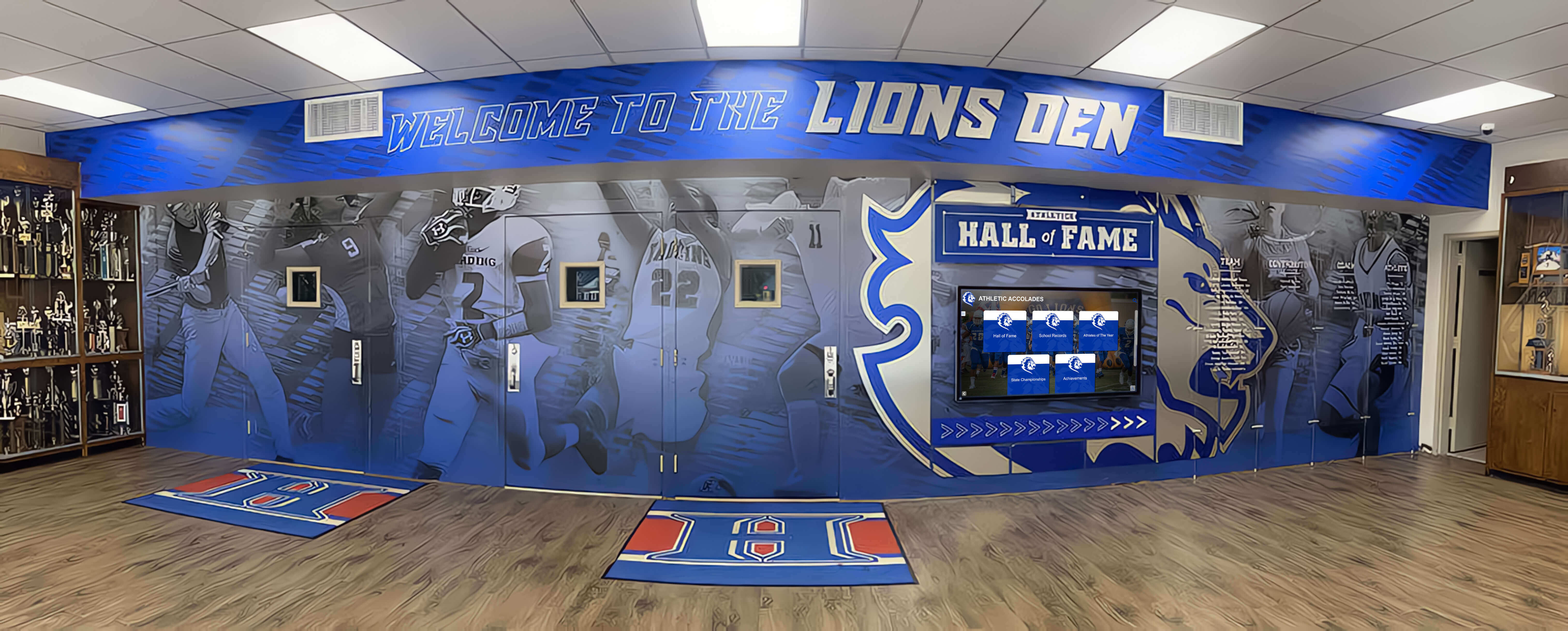
Research Sources:
- Archived yearbooks (school libraries, alumni collections, historical societies)
- Newspaper microfilm or digital archives from local media
- State athletic association historical databases
- Retired coach recollections and personal records
- Alumni association contacts and networks
- Historical society resources and institutional archives
- Previous program materials (media guides, championship programs)
Digitization Process: Converting historical records to digital formats involves photographing or scanning relevant yearbook pages, extracting athlete names, statistics, and contextual information, inputting data into structured databases or content management systems, organizing historical photos for digital display, documenting sources for future verification reference, and creating metadata tags enabling efficient searching.
Schools implementing digitization of athletic history report that alumni enthusiastically contribute information, photos, and stories once they see programs genuinely committed to honoring past achievements.
Content Development Strategies
Athlete Profiles: Comprehensive profiles transform statistics into stories:
- Basic biographical information (graduation year, position, physical stats)
- Career statistics and season-by-season progression
- Notable single-game performances
- Team achievements during their career (championships, playoff runs)
- Individual honors (all-state, all-conference, state records)
- Post-high school athletic career (college, professional)
- Current status and accomplishments
- Brief narrative describing their playing style and impact
- Quotes from the athlete about their experience
- Quotes from coaches about the athlete’s character and contributions
Visual Content: Quality photography dramatically improves presentation:
- Professional or semi-professional game action shots
- Posed portraits in uniform
- Team photos from championship seasons
- Historical photographs showing program evolution
- Ceremony photos when records were broken
- Current photos of record holders for historical profiles
Multimedia Enhancement: Video and audio content creates engaging experiences through game highlights showing record-breaking performances, championship game footage, interview clips with athletes and coaches, historic radio broadcasts, documentary-style features about program history, and tribute videos created for recognition ceremonies.
Creating Memorable Recognition Ceremonies
Beyond static displays, schools should create memorable moments when athletes achieve state-level football records.
Real-Time Recognition During Games
In-Game Acknowledgment: When state records break during competition, immediate recognition amplifies impact through public address announcement as achievement occurs, scoreboard graphic displaying the record, brief stoppage of play for acknowledgment when appropriate, game ball presentation after the contest, photo opportunity on field immediately following game, social media posts during or immediately after games, and local media notification for same-evening coverage.
This immediate acknowledgment validates achievement while excitement remains high, creating powerful emotional moments athletes remember for life.
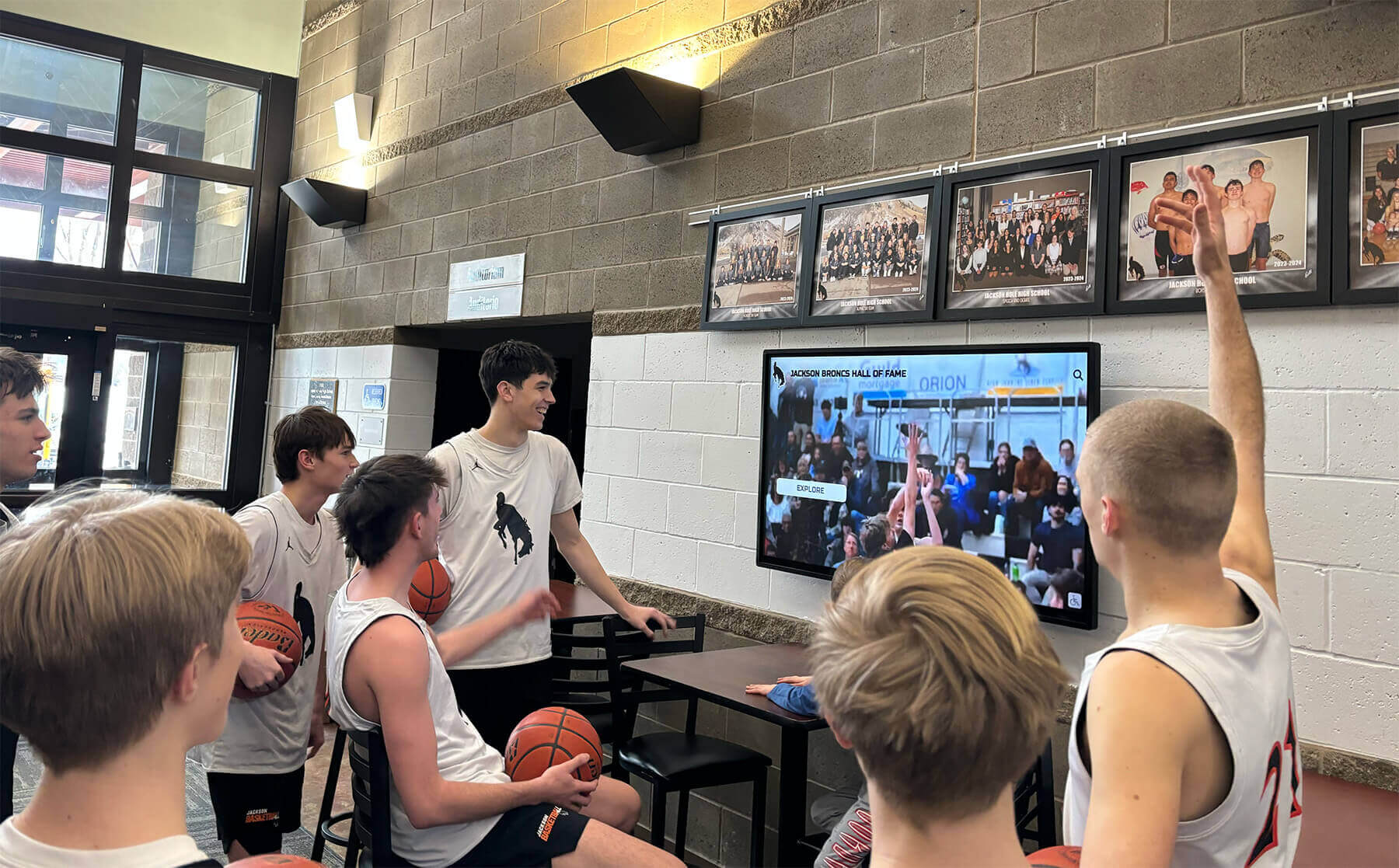
Post-Game Ceremonies: Planned ceremonies at subsequent home games allow proper celebration:
- Family invitation to field for public recognition
- Video tribute on scoreboards showing career highlights
- Coach testimonial about athlete’s career and character
- Presentation of commemorative items (game ball, framed certificate)
- Photo opportunities with coaches, teammates, and family
- Standing ovation from home crowd
- Recognition announcement in game programs
Digital Display Coordination: Integrate ceremonies with recognition display updates by featuring the honoree prominently on touchscreen displays during the game, displaying career statistics on scoreboards, capturing ceremony photos for digital athlete profile, creating shareable social media graphics during the event, and updating recognition display to include achievement before or immediately after ceremony.
Commemorative Items
Physical Recognition: Tangible items athletes keep permanently:
- Custom footballs inscribed with achievement details
- Engraved plaques or trophies
- Framed certificates documenting state records
- Custom apparel (letterman jacket patches) acknowledging achievement
- Commemorative programs signed by coaches and administrators
- Professional photo prints from ceremony or career action shots
Digital Recognition Artifacts: Modern keepsakes for the digital age:
- High-resolution digital photo packages
- Professionally edited highlight videos
- Social media graphics families can share
- PDF certificates suitable for printing or digital display
- Website links to permanent athlete profile pages
Programs implementing comprehensive recognition strategies for athletic achievements create cultures where excellence receives consistent celebration rather than isolated acknowledgment.
Budget Considerations and Funding Strategies
Understanding costs and identifying funding sources enables schools to implement comprehensive record recognition systems.
Digital Recognition System Costs
Hardware Investment:
- Entry-level system (43-50" display): $4,000-6,000 installed
- Standard system (55-65" display): $6,000-9,000 installed
- Premium system (70-86" display): $12,000-20,000 installed
- Multi-display configuration: Costs scale with number of screens
Software and Services:
- Cloud-based content management platform: $1,500-3,000 initial, $500-1,200 annual
- Content development assistance: $1,000-5,000 depending on scope
- Training and ongoing support: Often included in software subscription
- Professional photography services: $500-2,000 for comprehensive session
Long-Term Cost Comparison:
Traditional system 10-year total:
- Initial board fabrication: $4,000-8,000
- Annual updates and maintenance: $500-2,000 × 10 years = $5,000-20,000
- Total: $9,000-28,000 with limited capacity and information
Digital system 10-year total:
- Initial investment: $6,000-9,000
- Annual software/support: $500-1,200 × 10 years = $5,000-12,000
- Total: $11,000-21,000 with unlimited capacity and rich multimedia
Digital systems achieve cost parity within 5-7 years while providing dramatically superior recognition capabilities and lower maintenance burden.

Funding Sources
Athletic Booster Clubs: Booster organizations frequently fund facility improvements and recognition systems that support athlete motivation. Present digital displays as investments enhancing program culture and competitive advantage.
Alumni Donations: Former athletes often support recognition projects, especially when their own achievements will be honored. Create opportunities for naming rights or dedicated displays honoring specific championship teams or outstanding individuals.
Memorial Gifts: Families sometimes direct memorial contributions to athletic programs. Recognition displays accepting updates perpetually can honor deceased athletes, coaches, or supporters through ongoing visibility.
Grant Opportunities:
- Educational technology grants supporting interactive learning tools
- State athletic association grants for facility improvements
- Community foundation grants supporting youth development
- Corporate foundation grants for educational institutions
- Equipment vendor partnerships or sponsored installations
Budget Reallocation: Discontinue purchase of traditional plaques and physical recognition items, redirect trophy budget toward comprehensive digital recognition, reduce spending on replaceable physical displays requiring ongoing maintenance, and consolidate multiple recognition budgets into single digital system serving multiple purposes.
State-Specific Record Resources
Each state maintains official football records through their athletic association:
Major State Record Systems:
- Texas: Dave Campbell’s Texas Football (most comprehensive state record book)
- Ohio: OHSAA Football State Records
- California: Cal-Hi Sports Football Records
- Florida: FHSAA Football Record Book
- Pennsylvania: PIAA Football Records
- Georgia: GHSA Football Records
- Illinois: IHSA Football Records
- Michigan: MHSAA Football Records
Most state athletic associations provide online access to official record books, updated annually with new achievements and verified records.
Schools should regularly reference their state’s official records when updating recognition displays, ensuring accuracy and proper context for achievements relative to statewide benchmarks.
Measuring Impact and Success
Effective recognition programs demonstrate value through both quantitative metrics and qualitative observations.
Quantitative Indicators
Usage Metrics: For systems with analytics capabilities:
- Number of interactions with digital displays
- Time spent exploring content
- Most-viewed athlete profiles and records
- Search queries revealing interest areas
- Peak engagement times and patterns
Performance Indicators: Observable changes potentially attributable to enhanced recognition:
- Athletic participation rates in football programs
- Number of athletes reaching significant milestones
- Improved performance metrics across program
- Multi-season athlete retention rates
- Tryout numbers for various team levels
Cost Savings: Documented financial benefits through eliminated traditional board update expenses, reduced staff time managing recognition, avoided replacement costs for deteriorating physical displays, and lower maintenance requirements compared to physical systems.
Qualitative Assessment
Athlete Perspectives: Regular feedback from student-athletes provides crucial insights about how meaningful they find the recognition, whether displays influence their goal-setting, ideas for improving recognition experiences, impact on program pride and team culture, and perceived fairness of recognition.
Coach Observations: Coaches notice behavioral changes and cultural shifts—whether athletes reference records in conversations, set specific achievement goals, show improved competitive intensity, demonstrate pride discussing program history, and connect with program traditions.
Community Feedback: Broader stakeholder perspectives include parent comments during games and recognition events, alumni reactions during return visits to campus, community member feedback on facility improvements, prospective student and family responses during recruitment visits, and media coverage of program achievements.
Beyond School Records: State and National Recognition
Schools should help athletes understand how their achievements compare to broader benchmarks beyond institutional records.
State Record Context
When athletes achieve school records, providing context about state records helps them understand their place in broader competitive landscapes. Digital recognition systems can display school records alongside state records, showing how close current athletes are to state-level achievements.
This contextual information motivates exceptional athletes to pursue higher benchmarks while celebrating their institutional achievements appropriately.
National Record Awareness
MaxPreps maintains a National High School Football Record Book tracking exceptional achievements across all states. While reaching national records remains extremely rare, awareness of these benchmarks provides ultimate aspirational goals for truly elite performers.
National records include achievements like career rushing yards (12,763 by Ron Dayne, New Jersey), single-season rushing yards (5,522 by John Giannantonio, California), career passing yards (16,032 by Todd Marinovich, California), and other extraordinary performances representing the absolute pinnacle of high school football achievement.
Conclusion
State football records serve as powerful tools for program building, athlete motivation, and institutional history preservation. From individual excellence represented by rushing records and passing milestones to collective achievements of championship teams, comprehensive record-keeping creates tangible connections between past, present, and future.
Traditional physical record boards served schools adequately for generations, but modern digital recognition systems dramatically enhance what’s possible. Unlimited capacity enables honoring every achievement worth acknowledging. Instant updates ensure timely recognition when excitement remains high. Rich multimedia content tells complete stories beyond simple statistics. Interactive interfaces invite exploration and engagement impossible with static displays.
The most successful football recognition programs share common characteristics: they track diverse achievement categories beyond just scoring records, they maintain accurate verified records aligned with state athletic association standards, they present information professionally through modern technology, they create memorable recognition ceremonies, and they leverage achievements to build program culture and motivate current athletes.
Whether your school competes in the largest classification or operates a small-school program, whether budget allows immediate comprehensive implementation or requires phased approaches, effective state football record recognition delivers measurable value through enhanced athlete motivation, preserved institutional history, and strengthened program identity.
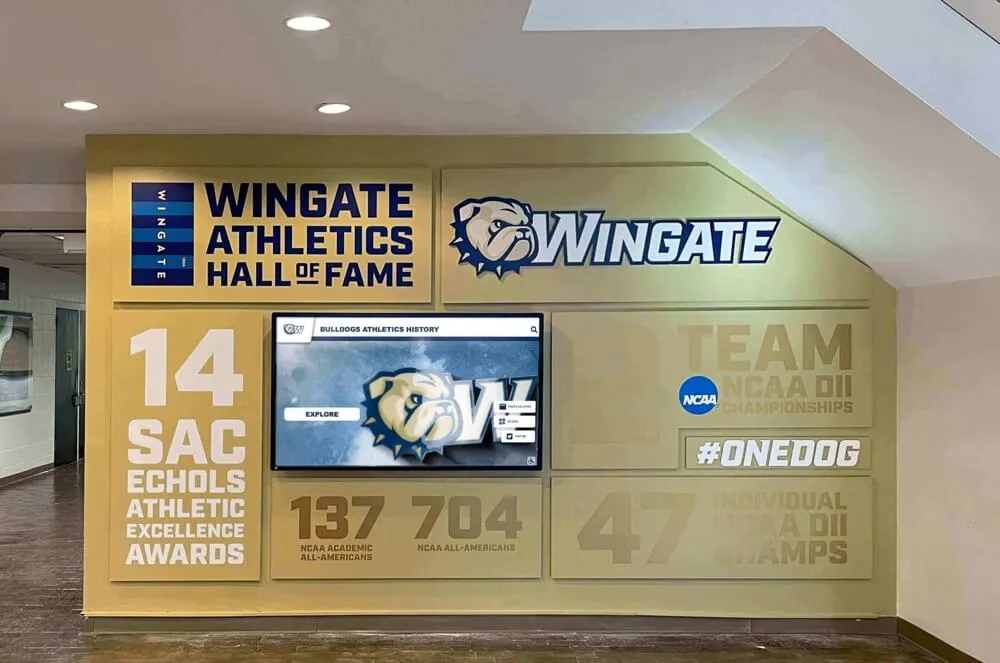
Transform Your Football Records Recognition
Modern solutions like those from Rocket Alumni Solutions enable schools to honor football excellence through intuitive digital recognition platforms designed specifically for athletic programs. These systems combine unlimited recognition capacity with simple content management, creating professional displays that inspire athletes while preserving program history.
Stop limiting recognition to what fits on finite wall space. Stop waiting weeks for manual updates. Stop maintaining deteriorating physical boards requiring constant maintenance. Modern digital football recognition displays provide comprehensive solutions honoring achievement while motivating current and future athletes.
Visit Rocket Alumni Solutions to explore how digital recognition transforms football achievement celebration from static displays into engaging experiences that inspire excellence across generations of athletes. Your program’s achievements deserve recognition that matches their significance—permanent, professional, and powerful.
Contact us today to discuss implementing recognition solutions that honor your football tradition while building the competitive culture where future achievements flourish. From state record holders to championship teams, comprehensive record systems ensure excellence receives the lasting recognition it deserves.




































